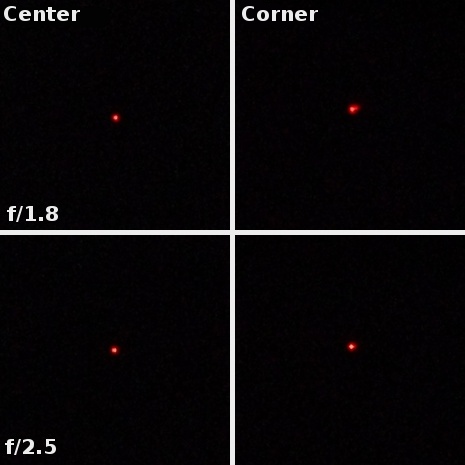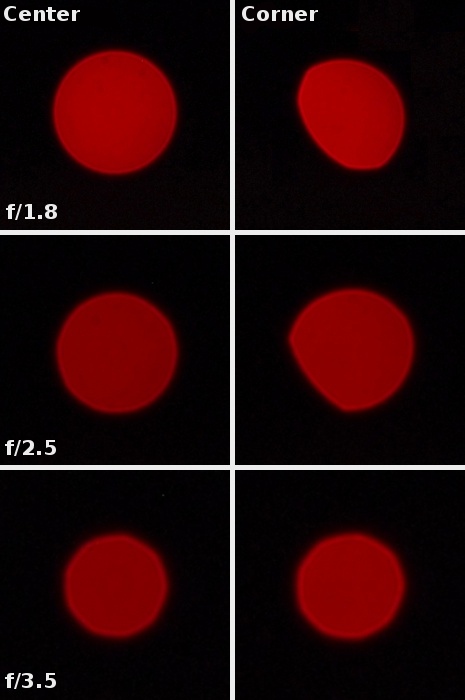Olympus M.Zuiko Digital 75 mm f/1.8 ED
7. Coma, astigmatism and bokeh

A bit more problems we have with the astigmatism. You can say it is the aberration which prevents the tested lens from achieving even better results at the maximum relative aperture. Still there are no major problems here. An average difference between vertical and horizontal MTF 50 values amounted to 9% which is on the borderline between low and medium values.
Please Support UsIf you enjoy our reviews and articles, and you want us to continue our work please, support our website by donating through PayPal. The funds are going to be used for paying our editorial team, renting servers, and equipping our testing studio; only that way we will be able to continue providing you interesting content for free. |
- - - - - - - - - - - - - - - - - - - - - - - - - - - - - - - - - - - - - - - - - - - - - - - -
Let’s check how the images of defocused points of light look. Apart from a noticeable rim at the very edge of the circle you can’t notice any local extremes and the light spreads evenly. Defocused images, provided by this lens, and bokeh, generated by it, should be pleasing to the eye.







